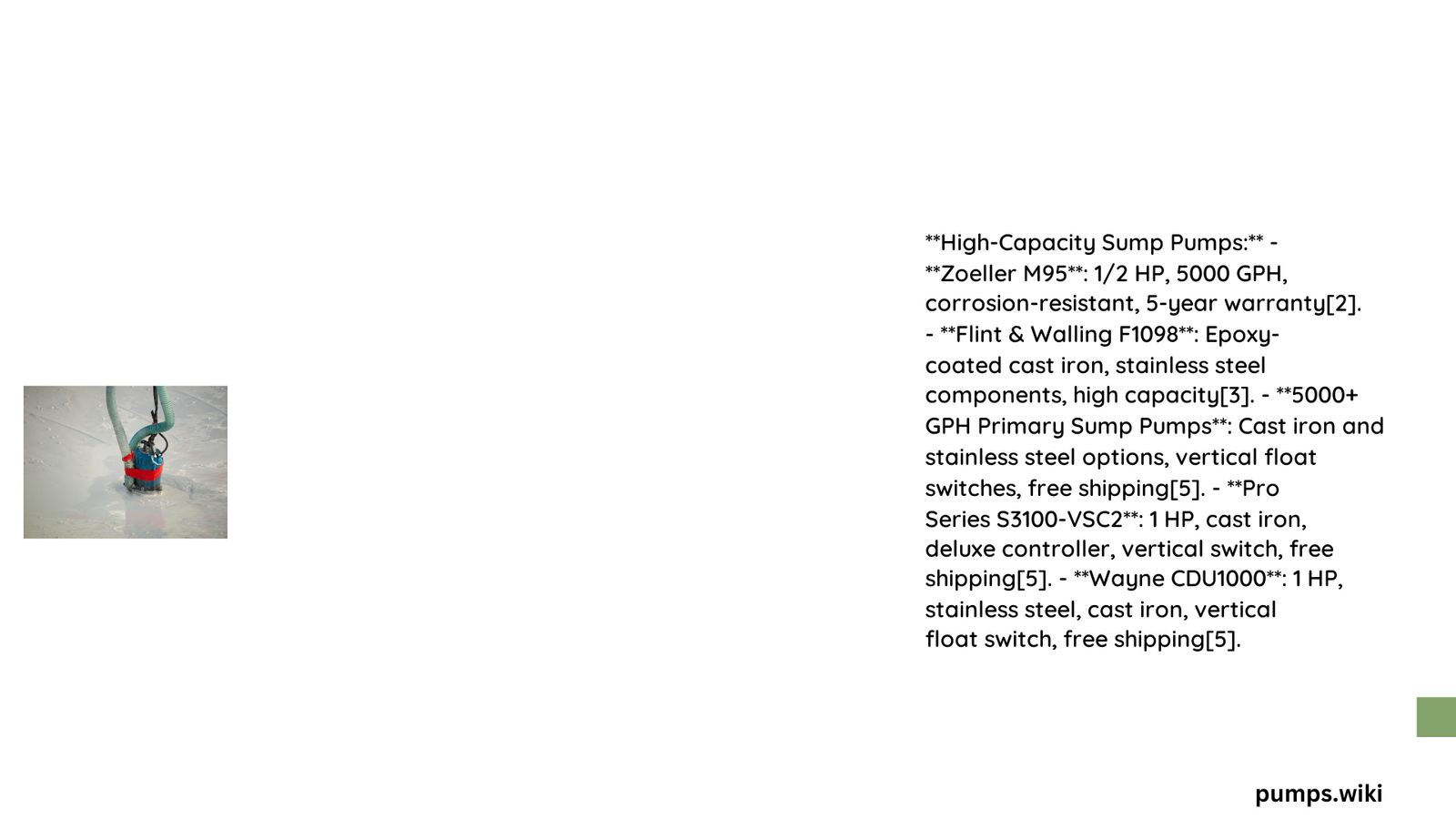Large capacity sump pumps are critical infrastructure solutions designed to manage substantial water volumes in residential and commercial settings. These robust systems provide superior water removal capabilities, handling up to 103 gallons per minute with advanced engineering, making them essential for preventing flooding, protecting property foundations, and managing complex drainage challenges in high-moisture environments.
What Makes Large Capacity Sump Pumps Unique?
Performance Specifications
Large capacity sump pumps distinguish themselves through exceptional technical capabilities:
| Manufacturer | Flow Rate | Horsepower | Discharge Size |
|---|---|---|---|
| Little Giant | 46 GPM @ 5′ | 1/3 HP | 1-1/2″ |
| Liberty 250 | 50 MAX GPM | 1/3 HP | 1-1/2″ NPT |
| AMT Industrial | Up to 103 GPM | 1/3 – 3/4 HP | 1-1/2″ or 2″ |
Why Choose Large Capacity Sump Pumps?
Key Advantages
- High Water Removal Rates: Capable of managing extensive water volumes
- Robust Construction: Typically made from cast iron or stainless steel
- Versatile Applications: Suitable for residential, commercial, and industrial environments
How Do Large Capacity Sump Pumps Work?

Core Operational Mechanics
Large capacity sump pumps operate through a sophisticated mechanism:
- Water accumulates in the sump pit
- Float switch activates when water reaches critical level
- Pump engages, rapidly removing water through discharge pipe
- Check valve prevents water backflow
- Continuous monitoring ensures consistent performance
What Installation Considerations Exist?
Critical Preparation Steps
- Sump Pit Requirements:
- Minimum diameter: 10-14 inches
- Recommended depth: 24 inches
- Proper drainage slope
-
Clean, debris-free environment
-
Electrical Considerations:
- 115 VAC power source
- Dedicated circuit recommended
- Professional electrical installation advised
What Maintenance Strategies Maximize Pump Longevity?
Proactive Care Techniques
Regular Inspection Checklist
- Examine float switch functionality
- Clean intake screens
- Verify electrical connections
- Test pump performance quarterly
- Inspect discharge pipe for blockages
Which Factors Influence Pump Selection?
Evaluation Criteria
When selecting a large capacity sump pump, consider:
– Water volume expectations
– Vertical lift requirements
– Power availability
– Budget constraints
– Environmental conditions
What Are Common Challenges?
Potential Performance Limitations
- Potential clogging with debris
- Electrical connection complexities
- Noise during high-intensity operations
- Potential thermal overload
Expert Recommendations
Best Practices
- Choose pumps with thermal protection
- Install backup power systems
- Perform annual professional inspections
- Consider redundant pump configurations
- Maintain detailed maintenance logs
Cost Considerations
Investment Analysis
- Entry-level models: $200-$500
- Professional-grade systems: $500-$1,500
- Installation costs: $300-$1,000
Technical Specifications Matter
Comparative Performance Metrics
- Flow rates range from 46-103 GPM
- Horsepower: 1/3 to 3/4 HP
- Discharge sizes: 1-1/2″ to 2″
- Voltage: Predominantly 115 VAC
Conclusion
Large capacity sump pumps represent sophisticated water management solutions, offering robust performance and critical protection against potential water damage.
